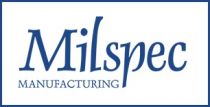Lactic Acid Market and Polylactic Acid Markets - Global Forecast to 2025 - ResearchAndMarkets.com
The "Lactic Acid Market - Global Forecast to 2025" report has been added to ResearchAndMarkets.com's offering.
The Lactic Acid Market is Estimated to be Valued at USD 1.1 Billion in 2020 and Projected to Reach USD 2.1 Billion by 2025 at a CAGR of 12.8%
The growth of the lactic acid market is driven by its industrial applications, such as biodegradable polymers, food & beverages, personal care products, and pharmaceuticals. The consumption of lactic acid has increased due to its role as a monomer in the production of biodegradable polylactic acid, which is a sustainable bioplastic product.
Polylactic acid is a bio-based renewable polymer that finds application in a wide range of industries. Recent advancements in the production process of polylactic acid and improvements in the properties of polylactic acid through co-polymer blends are the key factors that are projected to create growth opportunities for manufacturers operating in sectors such as food packaging, non-woven, films, and fibers.
By lactic acid application, the biodegradable polymers segment is estimated to be the largest segment during the forecast period.
Biodegradable polymers segment represents a largest portion of the lactic acid market. They have the potential to be used as an alternative to toxic plastics that are derived from petrochemicals and eventually replaces them. The growth of the market for industrial applications of lactic acid is primarily driven by its use in biodegradable polymers. Biodegradable polymers have a major advantage over non-biodegradable polymers in terms of degradation, as biodegradable polymers can be decomposed by microorganisms. The usage of biodegradable polymers can lower the cost of labor used for the removal of conventional plastics, as plastics have been detrimental to the environment.
By polylactic acid application, the packaging segment is estimated to be the largest segment during the forecast period.
Packaging segment represents a largest portion of the lactic acid market. The modern business ecosystem is more inclined to reduce environmental carbon footprint besides controlling their costs. This has been achieved by the use of advanced polylactic acid (PLA) packaging technology. PLA has numerous competitive advantages in the packaging industry over petrochemical-based polymers, as they are biodegradable and obtained from 100% natural sources. This helps in reducing greenhouse gas emissions, lowering carbon footprint, and easy manipulation of structure-property-processing relations during production.
By form, liquid segment in the lactic acid market estimated to account for the largest share during the forecast period.
The liquid segment in the form is estimated to dominate the market for lactic acid. The liquid form of lactic acid is generally less stable than solids, although it may witness improved functionalities than the dry (powder) form. It is directly used in the liquid form or sprayed and absorbed on a solid carrier. Biodegradable polymers manufactured using liquid lactic acid have major advantages, such as increased flexibility, and are moldable as per the required dimensions. In food & beverages, lactic acid acts as a curing or gelling agent, flavor, food carrier, solvent, and preservative as it is easy to mix in the liquid form.
The Asia Pacific region for the lactic acid market is projected to grow at the highest CAGR during the forecast period
The lactic acid market in the Asia Pacific region is largely driven by industrial shift and technological advancements that have made lactic acid available for a wide range of applications such as biodegradable polymers and food & beverages. Developed markets such as North America and Western Europe are becoming mature, which has led to faster growth in developing markets such as Asia Pacific. Rise in consumer awareness toward the mitigation of food wastage in the region has also aided the demand for lactic acid in the food & beverages industry. The changing lifestyles of consumers have inclined them toward convenience food products with higher shelf-life. Owing to the changing consumer preferences, their shift toward convenience food stores, supermarkets, and quick-service restaurants are increasing in countries such as India, China, Australia & New Zealand, and Japan.
The Asia Pacific region for polylactic acid market is projected to grow at the highest CAGR during the forecast period
The polylactic acid market in the Asia Pacific region is largely driven by the increase in preference among consumers for packaged food products. This is a major factor that is projected to create a significant change in the food packaging industry, leading to a preference for environment-friendly packaging, which creates a growth opportunity for polylactic acid in the region. With the increase in production of PLA-based food packaging, the demand for polylactic acid is projected to remain high. China, India, and Australia & New Zealand are some of the leading markets in the Asia Pacific region.
Leading players profiled in this report include the following:
- Corbion (Netherlands)
- DuPont (US)
- Cargill (US)
- Galactic (Belgium)
- DOW (US)
- Unitika (Japan)
- Henan Jindan Lacic Acid Technology (China)
- Sulzer (Switzerland)
- Mushashino Chemical (Japan)
- Vigon International (US)
- Henan Xinghan Biology Technology (China)
- Danimer Scientific (US)
- COFCO BioChemical (China)
- Jungbunzlauer (Switzerland)
- FoodChem International (China)
- Vaishnavi Biotech (India)
- Spectrum Chemicals (US)
- Godavari Bio-refineries (India)
- ProAgro GmbH (Austria)
- Qingdao Abel Technology (US)
For more information about this report visit https://www.researchandmarkets.com/r/w70wpq
View source version on businesswire.com: https://www.businesswire.com/news/home/20210106005361/en/



